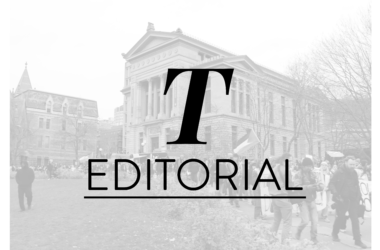Many commuters, including students, rely on infrastructure like public transit, sidewalks, and bike lanes to get around the city. But, sometimes, infrastructure fails: On Jan. 9, three out of four metro lines were closed due to a pepper-spray incident, and, on Jan. 17, the blue line closed due to an electrical explosion in Rosemont station. Even when everything is functioning properly, access to Montreal’s transit system is inequitable, and physical and structural barriers render the city’s infrastructure inaccessible to many Montrealers.
According to a study published by the Communauté métropolitaine de Montréal (CMM) last Feb., 65 per cent of people in the Greater Montreal Area still commute by car, a figure that is increasing as bus ridership faces a steep decline. The effect of this statistic is visible in Montreal’s intense congestion and traffic problems. That car usage is increasing while public transit remains more affordable suggests that public transit remains a less-viable option for many Montrealers, and, for some, an impossible one.
One in 10 Quebecers have a physical disability, and Montreal currently does little to provide them with transport services: Only 14 out of 68 metro stations are wheelchair-accessible, and they are all on the orange line, with one at the green-orange transfer station Berri-UQÀM. The inaccessibility of other green-line stations like McGill, Peel, and Place des Arts means that McGill students with physical disabilities have few transit options for commuting to school. The Société de transport de Montréal (STM) does have some dedicated transit services, like Paratransit and bus-ramps for wheelchair users, but these services are also unreliable, as many report faulty ramps, inefficiencies, and limited options for travel times. For example, after Montreal received 23 cm of snow on Jan. 20, the STM released a statement warning that buses may be unable to extend wheelchair ramps at usually-accessible bus stops. Montreal should look to neighbouring cities, like Toronto, which is planning on having step-free stations by 2025.
The STM’s accessibility issues are indicative of broader flaws in Montreal’s public infrastructure. Poor sidewalk snow removal and constant construction leave much of the city beyond the reaches of those with reduced mobility. McGill’s campus is full of similar barriers due to inefficient surrounding construction, inaccessible campus buildings, and, sometimes, a lack of necessary accommodations for students.
Besides increasing physical accessibility, there are other ways the system can better serve Montrealers. For example, to increase safety, metros and bus lines should run later on weekends to accommodate people who are out late: Public transit is safer than walking home alone at night. Although the chairman of the STM has said that it is ‘impossible’ to keep the metro open for 24 hours, cities like London, Copenhagen, Vienna, and New York City all have 24 hour service, at least on weekends.
To improve bus ridership, the STM can focus on increasing the number of buses to relieve overcrowding on popular lines, as many commuters report waiting up to 30 minutes for a bus empty enough to board. The STM could also consider introducing more payment options, including debit and credit contactless tapping, or even creating an app to add money to OPUS cards.
Increased investment can fix many of these problems. Building elevators, new metro lines, or increasing the number of buses all require large investments, but these are all necessary and, in the case of physical accessibility, a human rights issue. Initiatives like Montreal Mayor Valérie Plante’s Pink Line are crucial—albeit costly—undertakings to help commuters in the West Island and Montreal-Nord better access the city.
In the meantime, commuters can do their part to make the public transit system more accessible. Going to the back of the bus, making space for people in wheelchairs to get on the bus, and giving up their seat to those who have priority all contribute to making the STM’s infrastructure a more viable transportation option for all.
The inaccessibility of the public transit system is indicative of broader issues throughout Montreal’s public infrastructure, including McGill. Montreal is failing to meet the needs and uphold the rights of people with reduced mobility, and the city must be held accountable for fixing that.





